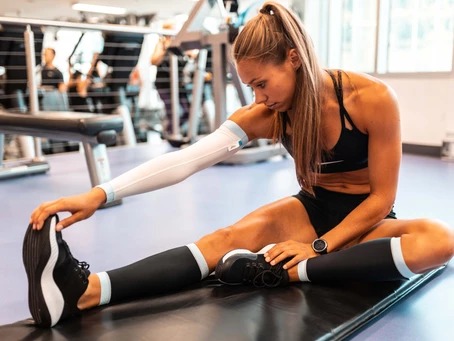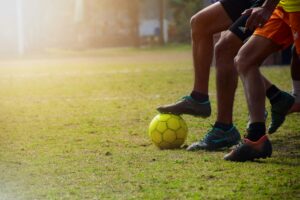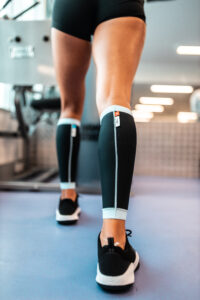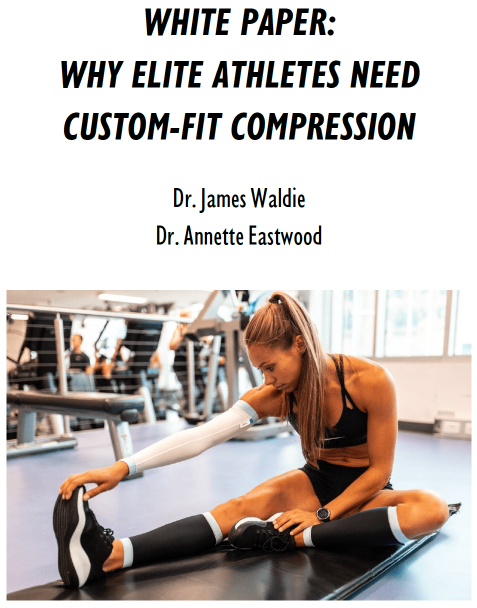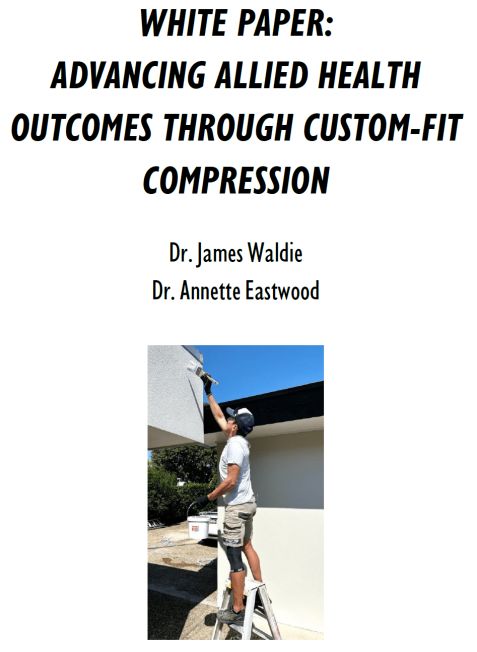Osteoporosis is a very serious condition of low bone mass or density, and affects 55% of the population over 50 in the United States. The greatest risk is in women who can lose up to 2% bone mass per year following menopause. Bone loss can be much worse for Astronauts, however, who can lose up to 2% per month! The loss is predominantly in the weight bearing areas of the skeleton (thoracic and lumbar vertebrae, pelvis, femur, tibia, fibula and calcaneus) due to the unloading of (and adaptation to) weightlessness.
A large study recently looked at the change in bone mass for over a hundred astronauts and found mission losses of 6.2% in the lumbar spine/pelvis and 5.4% loss in the lower limbs. Interestingly, bone mass increased by 2.2% in the skull – this could be due to the increase in intracranial pressure as fluids aren’t pulled to the lower extremities like on Earth.
This extreme adaptation is characterised by an increase of calcium resorption from the bone by osteoclast cells, and a decrease in the proliferation and activity of bone-forming cells (osteoblasts). Bone resorption in space increases up to 113% of pre-flight normal, while bone formation remains unchanged during the first 30 days and increases thereafter at ~7% per month. Upon landing, resorption decreases to pre-flight levels, while formation increases at 84% per month for 3–5 months post-flight.
Bone calcium loss and fracture risk is one of the most important limiting factors for long-term spaceflight. This fracture risk (particularly in the hip) is greatly increased after returning to earth (1g), or during activities on Mars or the Moon. NASA also highlights the acceleration of osteoporosis and the failure to fully recover post-flight as a significant risk to astronaut health, safety and performance. On a typical Mars mission, an astronaut could see bone deterioration reach a weakened state equal to that of severe osteoporosis. Assuming bone demineralisation of one per cent per month, the prevalence of lumbar spine fractures for astronauts on a Mars mission would be 20% after 12 months, and 40% after 24 months. The crew would have the hipbones of a 90 year old by the time they return after 2.5 years. Recovery on Earth can only be partial, as shown by Skylab astronauts, but it is possible that the diameter of the bones increase significantly due to the erratic bone remodelling – as this creates a more efficient structure, full bone mass recovery may not be necessary.
Skeletal deconditioning is due to the reduction or absence of loading in the microgravity environment. Loading bone invokes slight deformations, or strain. If the strain is above normal conditions, then remodelling occurs to increase bone mass. If strain is below the normal conditions, remodelling will cause a decrease in bone mass. The exact limit is unknown for several reasons. First, it is likely that humans do not require full gravity 24 hours a day to remain healthy. The average human sleeps for about 8 hours each day, during which the body is unloaded in the vertical (or z) direction. Most people also sit down for a significant portion of the working day, unloading the legs. Second, the mechanical loads that cause skeletal strains are applied via weight bearing stress, but also higher (but shorter duration) impact loads during walking/running. To maintain bone health, it is theorised that both of these regimes must be duplicated during microgravity exposure.
There are still many issues involved with bone loss: it is unknown, for example, whether bone loss of up to 2% will continue throughout the entire duration of future long-term missions. It is also unknown if bones require a full 1g to remain healthy, or how they will respond to the reduced gravity of the Moon or Mars. Recent exercise protocols on the International Space Station using a treadmill, cycle ergometer and resistance devices have successfully reduced bone loss, however these devices are likely to be too bulky to be included on future long duration expeditionary spacecraft on missions to the Moon or Mars. Also, they often break – you don’t have the space or mass allowance for spares, and good luck getting a delivery of parts on the far side of the moon!
People used to think that osteoporosis was an inevitable part of aging. Today we know a lot more about how to prevent, detect, and treat the disease. You are never too young or old to take care of your bones. The recipe for bone health is simple:
· Get enough calcium and vitamin D, and eat a well balanced diet.
· Exercise
· Don’t smoke or drink
If you’re in space though, the receipt isn’t so simple. Compression may be able to help by reloading the body statically as if it was standing on Earth, and aid in providing impact loading by connecting astronauts more effectively to exercise devices at up to 1g. In this way, the body thinks it is living on Earth and bone atrophy in space is reduced. Our CEO designed and patented such a suit using compression called the Gravity Loading Countermeasure Skinsuit which was flown on the Space Station in 2015 and 2017. The lessons of designing, testing and deploying that suit were the basis of CAPE Bionics, and of bringing significant benefits to athletes who deserve their compression to be more than just fashion.
